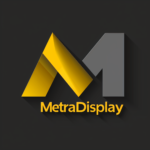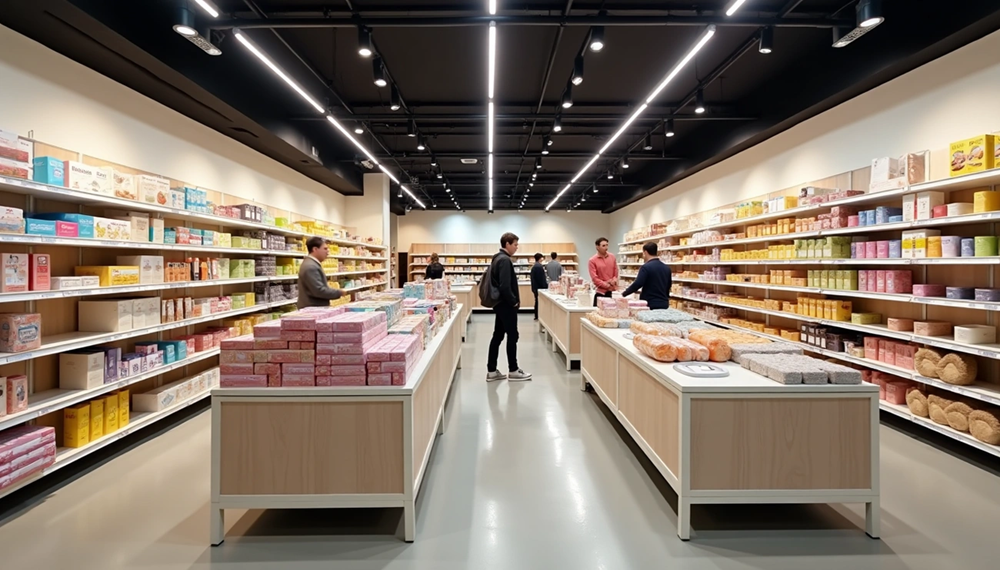
Smart shelf planning can boost sales by up to 14%? A remarkable 62% of in-store purchases come from impulse decisions that product placement directly influences.
Retail shelf space management needs more than just product arrangement to work well. Retail shelf planners must understand how customers move naturally through spaces. Shoppers want stores to focus on entertainment and engagement – 74% of them say so. This makes shelf management a vital part of retail success. The U.S. click-and-collect market will grow to $120 billion by 2023. Retailers need to adapt their shelf space to match these new shopping patterns.
Smart layouts like the racetrack arrangement make customers explore more. These designs guide shoppers smoothly through the store and show them more products. Good shelf planning draws customers in and helps them find items easily. The result? A better shopping experience for everyone.
This piece covers everything retailers should know about creating shop shelving layouts. The focus stays on maximizing customer flow, creating better shopping experiences, and driving more sales.
Understand Customer Flow and Store Behavior
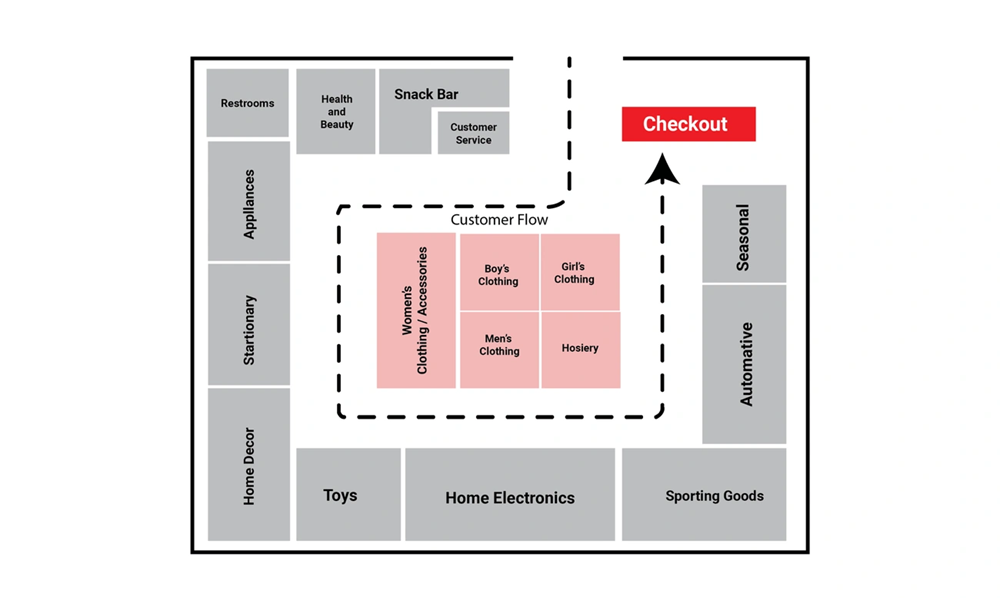
Customer movement in stores isn’t random—it’s a science that affects your profits directly. The way shoppers move through retail spaces helps retailers design shelf layouts that boost exposure and sales.
Understand Customer Flow and Store Behavior
Why customer flow affects sales
The way stores arrange their shelf space substantially influences buying decisions. McKinsey & Company’s research shows that better store layouts can boost sales by up to 15%. These numbers come from making products more visible to customers who hadn’t planned to buy them.
Customer flow affects four vital areas of retail performance:
- Easy movement and access: Customers buy more when they can find what they need quickly instead of leaving frustrated.
- Sensory engagement: Brick-and-mortar stores let customers touch and feel products, creating experiences that online shopping can’t match.
- Impulse purchasing: Smart product placement in busy areas leads to unplanned purchases and bigger sales.
- Customer loyalty: User-friendly store layouts create great experiences that bring people back, which then increases long-term revenue.
How shoppers move through a store
Research reveals several surprising patterns in shopper behavior that challenge what we thought we knew about store movement:
Americans almost always turn right when they enter a store – about 90% of them. This makes the right side of the entrance perfect for high-margin products.
Shoppers don’t zigzag through every aisle like we thought. Research shows “they stick to certain aisles and rarely follow the up-and-down pattern most people think is common”.
Customers who enter an aisle usually make quick trips instead of walking the whole length. This behavior shapes how retail shelf planners should place featured items.
The store’s outer edge—called the “racetrack”—works as a home base. “We used to think shoppers visited the perimeter while going up and down aisles. Now we know they use it as their main path, taking quick trips into aisles from there”.
The first 15 feet inside the entrance works as a “decompression zone” where shoppers adjust from outside to inside. People need time to get used to the lighting, temperature, and atmosphere, so promotional displays don’t work well here.
Common flow issues to avoid
Bad shelf planning creates barriers that chase customers away. Studies show 64% of shoppers leave without buying anything if a store feels messy or hard to get around. The biggest problems include:
- Bottlenecks and crowding: Messy pathways frustrate customers. Wide enough aisles let people browse comfortably.
- Fighting natural movement: Sales opportunities drop when stores ignore right-turn bias and perimeter-based movement.
- Packed displays: Too many products in small spaces lead to “a frenzy of indecision”. Stores need to balance variety with clear visibility.
- Poor entrance planning: Key signs or promotions in the first 15 feet waste marketing opportunities because customers aren’t ready to shop yet.
- Hard to find things: Unclear signs and confusing layouts frustrate people. Research shows that clean, organized stores help customers shop more easily and buy more.
These behavior patterns help retail shelf planners create layouts that work naturally with customer flow, which ends up driving better engagement and sales.
Choose the Right Shelving Layout for Your Store
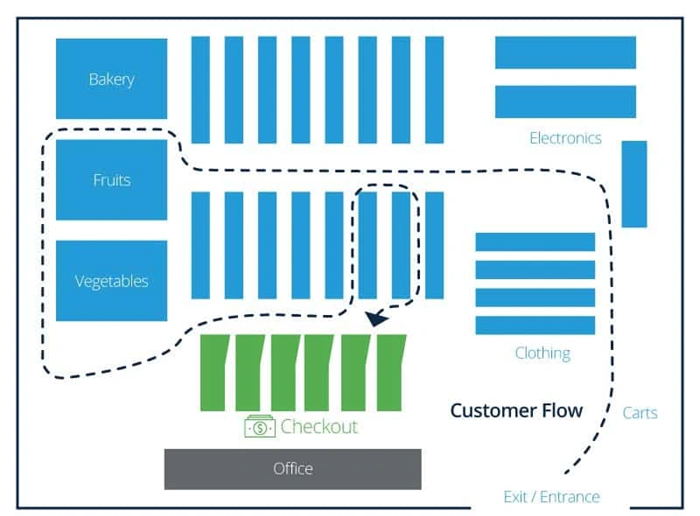
Choose the Right Shelving Layout for Your Store
Store layouts are the foundations of effective shelf planning. Different layouts create distinct customer experiences that shape how shoppers interact with retail shelf space.
Grid layout: best for large inventories
Grid layouts arrange merchandise in parallel aisles at right angles to create a systematic shopping environment. This classic setup maximizes product display and minimizes space. Grid layouts work best in stores with large product ranges. They make categorization easy and use floor space efficiently.
Big box retailers, grocery stores, and pharmacies use grid layouts because they handle high foot traffic well. These layouts also provide great visibility for promotional items on endcaps. Grid layouts can make shopping feel monotonous and rushed. In spite of that, most customers find them easy to navigate because they’re familiar with the setup.
Loop layout: guiding the customer’s trip
Loop layouts (or racetracks) differ from grids by creating a defined path through the store. This design leads shoppers past various displays on a preset route that maximizes product exposure. Products line the outer walls while the center area adapts to different configurations.
Department stores and specialty retailers often use loop layouts to create guided shopping experiences. The arrangement shows off all products and offers customizable paths. However, customers looking for specific items might feel frustrated. Loop layouts remain popular with retailers who want to control customer flow while displaying their full inventory.
Free-flow layout: encouraging exploration
Free-flow layouts break away from rigid patterns to spark creativity and exploration. Customers can browse freely without preset paths. The open design creates clear sightlines that make wall displays stand out.
High-end retailers, boutiques, and gift shops use free-flow layouts to create relaxed shopping environments. This flexible setup helps customers discover products naturally and enjoy a more personal shopping experience. The design uses space less efficiently, though, and poor organization can overwhelm shoppers.
Mixed layout: combining flexibility and structure
Many retailers choose mixed layouts that blend multiple configurations. This hybrid approach creates separate zones for different product categories or shopping experiences. Large department stores use this strategy to build distinct environments in one space.
A mixed layout might feature a loop around the store’s edges with grid or free-flow sections in the middle. Retailers can adjust these sections as their products or sales strategies change. Nordstrom shows this approach well by switching from grid layouts in athletic wear to free-flow areas in designer fashions, creating unique “shops within a shop”.
Understanding each layout’s strengths and limits helps retail shelf planners pick designs that improve customer flow and product exposure. The right layout enhances shopping experiences and boosts sales effectively.
Step-by-Step Guide to Designing Your Shop Layout

Step-by-Step Guide to Designing Your Shop Layout
Your shelf planning strategy needs a systematic approach. Here’s how you can develop a layout that guides customers through your store and boosts product exposure and sales.
Analyze store space and traffic patterns
Start by watching how customers move through your space. Watch their entrance patterns, look at purchase data, and check the time-lapse video if you have it. This shows you which areas get heavy foot traffic and which spots customers skip. You’ll spot ways to improve your layout quickly. Remember that 90% of customers turn right when they enter – this fact shapes your entire shelf strategy.
Plan entry points and decompression zones
Your store’s first 5-15 feet serve as a vital “decompression zone” where shoppers adjust to your retail environment. Keep this space open. Let customers get used to your store’s lighting, temperature, and atmosphere. Put shopping baskets and carts on the right side. This matches the “invariant right” pattern where shoppers head right and move counterclockwise.
Position shelving and displays strategically
Your shelving should match natural customer movement. High-margin or popular items belong at the back of the store. This encourages customers to walk through your entire space. Create “speed bumps” along the way – special displays that make customers slow down and browse. Good planogram software helps you place products based on sales data and traffic patterns.
Ensure clear and available pathways
Your aisles should be at least 3.5 feet wide. This gives room for strollers, wheelchairs, and browsing customers. Wide aisles prevent the “butt-brush effect” – customers avoid tight spaces that force physical contact. ADA rules require three-foot-wide aisles, clear paths, and open floor space throughout your retail area.
Optimize checkout and impulse zones
Put your point-of-sale system on the store’s left side. This matches the natural counterclockwise shopping pattern. Larger stores might need multiple checkouts or mobile POS systems to cut down lines. Small, tempting items near checkout areas boost last-minute purchases. These impulse zones can boost your sales through smart shelf placement.
Use Visual Merchandising and Shelf Planning Tools
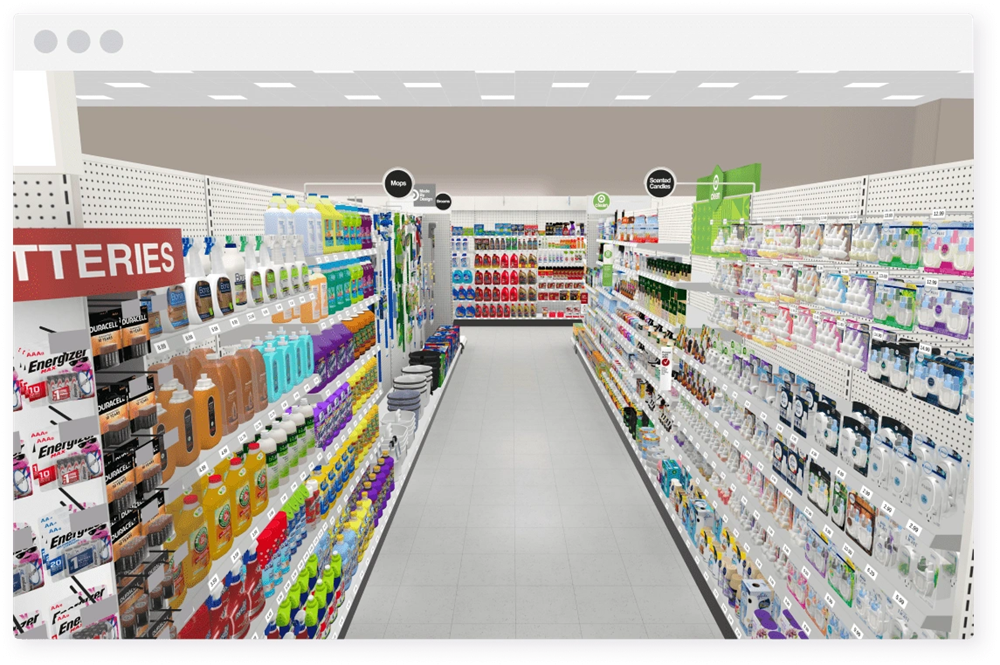
Use Visual Merchandising and Shelf Planning Tools
Retailers now depend on specialized tools to make the most of their shelf space and create better customer experiences. These technologies turn old-school merchandising into evidence-based strategies that boost sales and simplify operations.
Use shelf planning software for layout design
Planogram software helps retail shelf planners create detailed visual blueprints for product placement throughout the store. Retailers can:
- See shelf arrangements before making changes
- Get more sales per square foot through smart product positioning
- Keep layouts consistent across stores
- Look at performance metrics to use space better
SmartDraw and PlanoHero make layout design simple with drag-and-drop features and cloud teamwork options. The newest systems use AI to study customer behavior and create better traffic flow and product visibility.
Apply cross-merchandising techniques
Cross-merchandising puts related products together. This creates more purchase opportunities and makes shopping easier. Studies show this approach typically increases sales by 20%. Smart retailers place items that customers often buy together, like pasta and sauce or workout gear, next to fitness equipment. The “Rule of Three” groups three related products to catch the eye and create natural focus points.
Use signage and visual cues to guide movement
Signs do much more than show prices. Research shows 76% of shoppers will walk into a new store just because of its signs. Good signage needs:
Clear directions to different store areas, eye-catching promotional displays, and endcap displays that showcase featured products. Digital signage adds value through interactive screens and up-to-the-minute updates.
Maintain shelf management consistency
Great shelf management needs merchandising, marketing, and supply chain teams to work together smoothly. Consistent management means:
Regular stock checks, standard planograms across stores, and smart tech like RFID tags and shelf sensors track products as they move. This teamwork keeps shelves stocked, looking good, and matches the store’s strategy.
Avoid Common Mistakes in Shelf Layout Design
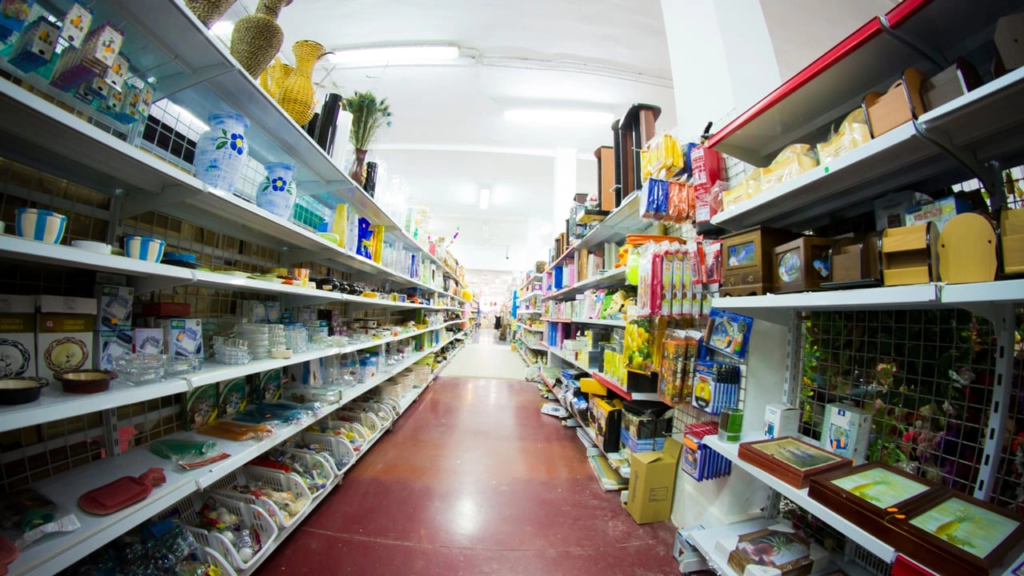
Avoid Common Mistakes in Shelf Layout Design
Retailers often make common shelf layout mistakes that reduce sales and create customer frustration, despite careful planning. Retail shelf planners can create better shopping environments by recognizing these issues.
Overcrowding shelves and narrowing aisles
Shoppers feel overwhelmed when too many products occupy limited shelf space. This discourages browsing behavior. Research shows that cluttered displays make product selection harder and drive customers away. Tight aisles create bottlenecks that prevent proper store exploration. Customers actively avoid confined spaces due to the “butt-brush effect”. The combination of packed shelves and narrow aisles not only frustrates customers but also creates theft opportunities. Shoplifters tend to prefer disorganized environments.
Ignoring customer movement patterns
Shoppers visit only 23% of a retail store on average. Most Americans (90%) turn right automatically when they enter a store. Many retailers make the mistake of placing promotional materials in the first 15 feet. This area serves as the “decompression zone” where customers adjust to the shopping environment and rarely notice displays. Successful shelf planning depends on understanding these natural customer behaviors.
Poor placement of high-interest items
Products placed in corners or below eye level struggle to catch customer attention. Non-competing items benefit from “attention spillover” when positioned near items on promotion. Retailers should place high-margin products away from promoted substitutes to maintain sales performance.
Conclusion
Shelf planning plays a vital role in retail success in today’s competitive marketplace. Your shelving layout directly shapes customer behavior, satisfaction, and your bottom line. Retailers who design their spaces with care see real results – from longer store visits to bigger purchases.
Store owners often overlook how customers move through their spaces, yet these patterns are predictable. Shoppers naturally turn right, stay away from cramped areas, and respond to visual cues throughout their experience. Retail shelf planners should work with these natural behaviors instead of fighting against them.
Different layout styles bring unique advantages based on your store type and inventory. Grid layouts work best for large product selections, while loop designs guide customers through set paths. On top of that, free-flow arrangements create spaces perfect for browsing, and mixed layouts blend elements to meet various needs. Your specific retail goals and customer expectations should guide the best choice.
The implementation process needs focus on several vital factors. Start by studying traffic patterns to understand how customers behave. Create welcoming entry areas that help shoppers transition into the store environment. Position your shelves to maximize product exposure while keeping pathways comfortable. Of course, optimize your checkout area to encourage last-minute purchases.
Today’s retailers benefit by a lot from specialized tools that turn gut feelings into data-backed strategy. Planogram software, cross-merchandising methods, and strategic signs all help manage shelves better. These approaches combined with consistent execution create smooth shopping experiences that bring customers back.
Avoiding common mistakes matters just as much for retail success. Packed shelves frustrate shoppers, and ignoring natural movement patterns wastes selling opportunities. Poor placement of popular items can hurt sales potential.
Shelf planning science might look daunting at first. Notwithstanding that, careful use of these principles brings substantial rewards. Retailers who focus on customer-friendly layouts create engaging shopping spaces, build stronger brand loyalty, and improve profit margins. Your shelf strategy forms the invisible framework that shapes every customer interaction – make it count.
Key Takeaways
Strategic shelf planning can transform your retail space into a sales-driving machine by working with natural customer behaviors and movement patterns.
• Strategic layouts boost sales by up to 15% – Grid layouts maximize inventory display, loop layouts guide customer journeys, and free-flow designs encourage exploration.
• 90% of customers turn right upon entering stores – Position high-margin products on the right side and create clear pathways that follow natural counterclockwise movement patterns.
• Maintain 3.5-foot minimum aisle widths – Avoid the “butt-brush effect” where customers flee cramped spaces, and ensure ADA compliance for accessible shopping experiences.
• Use the first 15 feet as a decompression zone – Keep store entrances uncluttered as customers adjust to the environment; place promotional displays beyond this transition area.
• Leverage planogram software and cross-merchandising – Digital tools optimize product placement while grouping complementary items together can increase sales by approximately 20%.
Understanding that 62% of purchases are impulse decisions influenced by product placement, retailers who implement these evidence-based layout principles create shopping environments that naturally guide customers through the entire store, maximize product exposure, and ultimately drive higher transaction values.
FAQs
Q1. How does customer flow impact sales in a retail store? Customer flow significantly influences sales by affecting navigation, sensory engagement, impulse purchases, and customer loyalty. Optimizing store layouts can increase sales by up to 15% by making it easier for customers to explore and discover products they hadn’t initially planned to buy.
Q2. What are the main types of store layouts and when should they be used? The main types are grid, loop, free-flow, and mixed layouts. Grid layouts work best for stores with large inventories, loop layouts guide customer journeys, free-flow encourages exploration in boutiques, and mixed layouts combine elements for versatility in larger stores.
Q3. How wide should store aisles be and why is this important? Store aisles should be at least 3.5 feet wide to accommodate strollers, wheelchairs, and multiple browsing customers. This prevents the “butt-brush effect” where shoppers avoid tight spaces and ensures ADA compliance, creating a more comfortable shopping experience.
Q4. What is the “decompression zone” in a store and how should it be used? The decompression zone is the first 5-15 feet inside the store entrance where customers transition to the shopping environment. This area should remain open and uncluttered as shoppers adjust to the store’s atmosphere, making it ineffective for promotional displays.
Q5. How can retailers use technology to improve their shelf planning? Retailers can use planogram software to create detailed visual blueprints for product placement, leverage AI-driven layout optimization to analyze customer behavior, and utilize RFID tags and shelf sensors to track product movement in real-time. These tools help maximize sales per square foot and maintain consistency across store locations.
